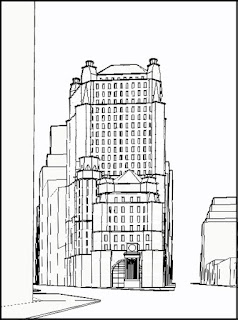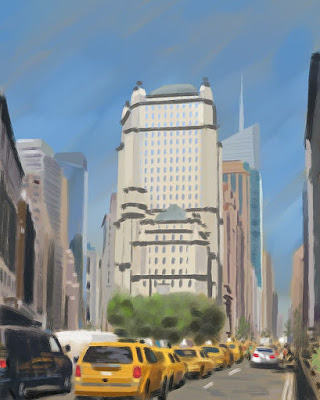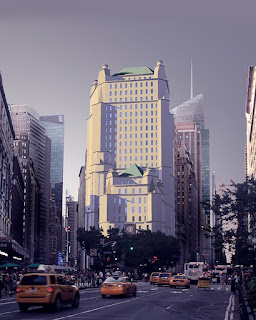Anders Leonard Zorn became Sweden’s foremost artist of the late 19th and early 20th centuries. Like his contemporary John Singer Sargent, he was famed for realistic portraiture which conveyed spontaneity and character. In this post I will focus on his handling of light and water, and the lessons that can apply to atmosphere in architectural illustration.
Anders Leonard Zorn was born in rural Sweden to a German brewer and a farm girl. Although illegitimate, his father set aside money for his education, and he was raised by his grandparents on a farm near the town of Mora. Because of his exceptional talent at drawing he was sent to the Royal Academy of Fine Art in Stockholm. Once he established his career he married Emma Lamm, the daughter of a wealthy family with useful contacts. Most of his busy career was spent in the cultural capitols of Europe and the United States, although he always spent the summer in his hometown.
Zorn made his mark with wonderful portraits of the rich and powerful (he painted portraits of 3 presidents). My interest in Zorn is his handling of light and water.
LIGHT ON FACES
This portrait of fellow painter Bruno Liljefors might seem spookily wrong, but it catches the strong reflected light coming from a field of snow to the left of Liljefors; something I experienced growing up in Minnesota.
These two portraits use a more conventional light coming from the right. Most traditional portraits use a light coming from over the viewer’s shoulder (“Beaux Art”).
Above are a couple variations of light that leaves the subject’s face in partial shadow, a form of “Saarinen Light”. Zorn was quite adventurous with modeling a subject’s face in middle value shadow.
This cigarette girl in “up” lighting illustrates Zorn’s skill in using an extreme light in a complimentary way (enhancing her beauty).
Zorn’s self-portrait captures not only the complex light of two light sources, but does it with the unforgiving technique of etching.
LIGHT AND BUILDINGS
Zorn painted surprisingly few views of buildings or cities. He graduated with a degree in perspective and anatomy, but I could not find any example of perspective layout in his drawings (The paintings do not however, show any blatant mistakes).
It seems that Zorn saw the built environment as scenery; there to “look” right and serve as support to the people in the painting. The paintings above exemplify this, a foggy London (Ambient light) and dancing in a farm village (Dusk lighting).
Interior views can be more exacting regarding perspective. This view of women baking shows that Zorn understands perspective. The light is straightforward except for the woman a far left who is lit by both the daylight on the right and the red oven on the left.
Curiously, Zorn seemed to have a preference for unusual viewpoints which is reflected in the assumed vanishing points at the top of the two paintings above. Note also that he is playing with multiple light sources, the second painting showing the color change between daylight and firelight.
These paintings, one of an informal rural dance, and the other a formal society affair, show Zorn’s love of contrasting light effects and color. They also represent the two worlds that he moved between most of his life; the simple farming community and the sophisticated urban world of social elites.
This self portrait uses conventional lighting for what could have been a conventional portrait. The mostly obscured model in the background sets up a tension which makes this painting so fascinating.
LIGHT AND WATER
He uses the simplest of means to capture reflection, refraction, transparency and color in any situation. The result is always a fascinating and mysterious composition that draws the viewer into a closer exploration of the paint on paper or canvas.
A preliminary color sketch. Note: Zorn was very traditional in the extensive research, sketching, value studies, color studies and refining that went into what seems a spontaneous painting.
The final.
Now I don’t expect architectural illustrators to paint like Zorn, but as inspiration he is worth checking out.
For a short bio with lots of images…
https://mydailyartdisplay.wordpress.com/2019/01/09/anders-zorn-part-1-the-early-years/
For a detailed biography…
http://www.artgraphica.net/free-art-lessons/anders-zorn-oil-painter/anders-zorn-oil-painter.htm



























































